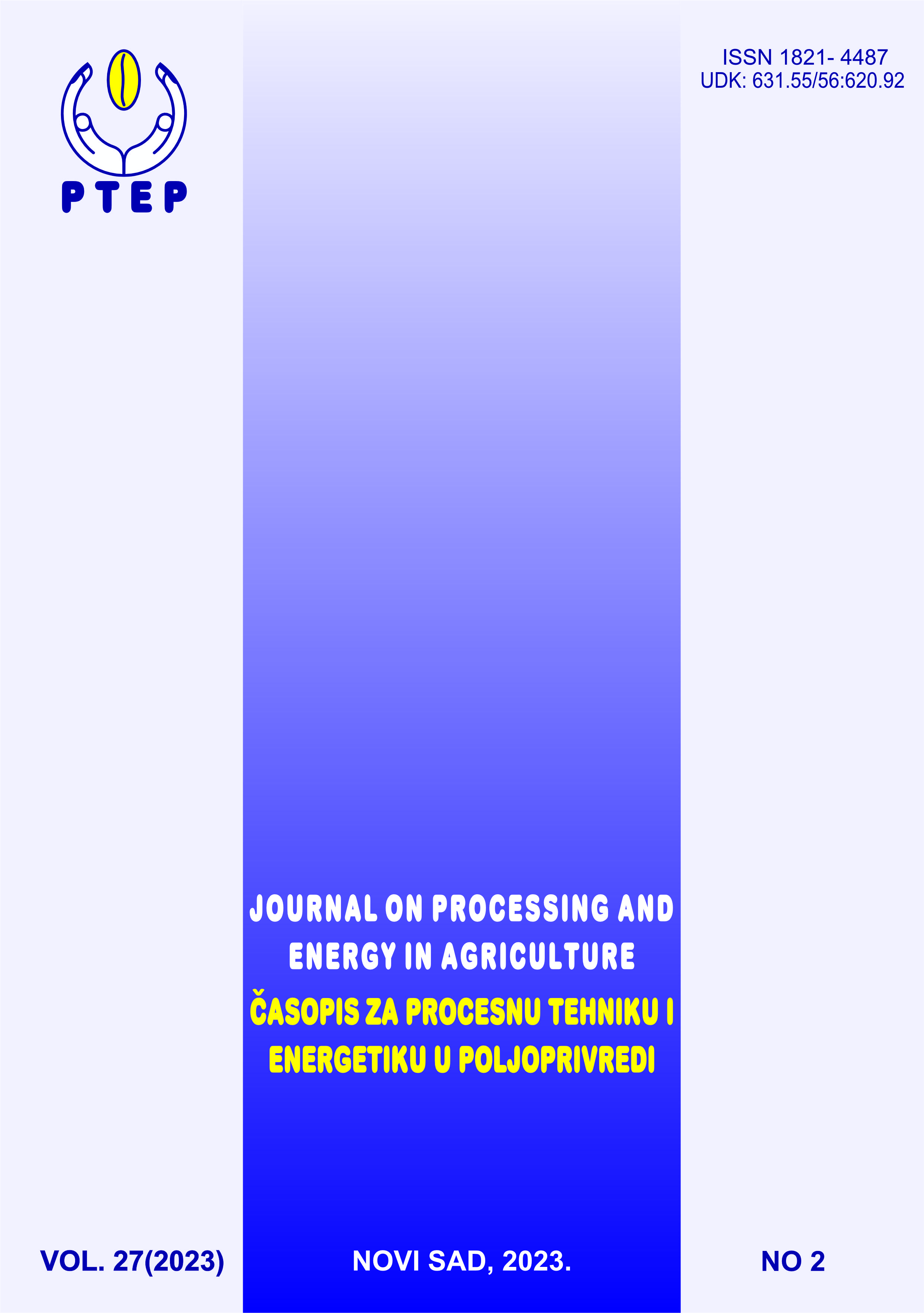INFLUENCE OF PHYTOPATHOGENIC FUNGI ON QUALITY PARAMETERS OF GREEN BEAN SEEDS IN A FIVE-YEAR PERIOD
Abstract
Green beans are among the most essential legumes because of their nutritional value. In this paper, the quality parameters of two varieties of green beans (GB1 and GB2) on the territory of Smederevska Palanka. The energy germination and total germination were the highest in the first observed year and amounted to 63% and 88% for GB1, respectively. For GB2 the energy germination and total germination (2018) were 71% and 75%, respectively. A significant decline in total germination was determined in 2020. and amounted to 75% for GB1 and 67% for GB2( p<0.05). The lowest energy germination and total germination were obtained in the last observed year (2022) in both genotypes and statistically increased infection with Alternaria sp. and Fusarium sp. Detection of phytopathogenic fungi was carried out using filter paper and potato dextrose agar method. The presence of Alternaria sp. was detected for GB1 and GB2 in the range of 2-3% (2018); Fusarium sp. was 3%. In the last observed year, the presence of other fungi was determined, apropos a higher percentage of diseased seeds with Alternaria sp. and Fusarium sp. (5-6%). Other phytopathogenic fungi were detected in both genotypes: Aspergillus sp. (1-3%), Penicillium sp. (1-4%), Rhizopus sp. (1-3%) and Rhizoctonia solani (2-3%). The moisture was 8.5-10.9 for both genotypes (p>0.05). The impact of phytopathogenic fungi on green beans was reflected in the reduction of total germination, and therefore in seed quality and yield.
References
Assefa, T., Assibi Mahama, A., Brown, A. V., Cannon, E. K., Rubyogo, J. C., Rao, I. M., Blair, M. W., & Cannon, S. B. (2019). A review of breeding objectives, genomic resources, and marker-assisted methods in common bean (phaseolus vulgaris L.). Molecular Breeding, 39(2). https://doi.org/10.1007/s11032-018-0920-0
Del Buono, D. (2021). Can biostimulants be used to mitigate the effect of anthropogenic climate change on agriculture? it is time to respond. Science of The Total Environment, 751, 141763. https://doi.org/10.1016/j.scitotenv.2020.141763
International Seed Testing Association. International Rules for Seed Testing (2020). ISTA Basserdorf, CH. https://www.seedtest.org/en/publications/international-rules-seed-testing.html
Ketta, H. A., & Hewedy, O. A. (2021). Biological control of phaseolus vulgaris and Pisum sativum root rot disease using trichoderma species. Egyptian Journal of Biological Pest Control, 31(1). https://doi.org/10.1186/s41938-021-00441-2
Yoder, W. (2005). Book review: D.K. Arora, ed. fungal biotechnology in agricultural, Food & Environmental Applications, Marcel Dekker, NY, 2004, 509 pp. Mycopathologia, 159(3), 475–477.
Marcenaro, D., & Valkonen, J. P. (2016). Seedborne pathogenic fungi in common bean (phaseolus vulgaris cv. Inta Rojo) in Nicaragua. PLOS ONE, 11(12).
Rules of the quality of seeds of agricultural plants (Official Gazette of the SFRY", no. 47/87). Republic of Serbia.
Silvestro, L. B., Stenglein, S. A., Forjan, H., Dinolfo, M. I., Arambarri, A. M., Manso, L., & Moreno, M. V. (2013). Occurrence and distribution of soil fusarium species under wheat crop in zero tillage. Spanish Journal of Agricultural Research, 11(1), 72. https://doi.org/10.5424/sjar/2013111-3081
Statistical Yearbook оf the Republic of Serbia (2020). Statistical Office of the Republic of Serbia, Belgrade.
Taboada, G., Abán, C. L., Mercado Cárdenas, G., Spedaletti, Y., Aparicio González, M., Maita, E., Ortega-Baes, P., & Galván, M. (2022). Characterization of fungal pathogens and germplasm screening for disease resistance in the main production area of the common bean in Argentina. Frontiers in Plant Science, 13. https://doi.org/10.3389/fpls.2022.986247
Todorović, J., Vasić, M., & Todorović, V. (2008): Beans and green beans. Institute of Agriculture and Vegetables, Novi Sad- Banja Luka. 333str. ISBN 987-99955-24-61-6
Toghueo, R. M., Eke, P., Zabalgogeazcoa, Í., de Aldana, B. R., Nana, L. W., & Boyom, F. F. (2016). Biocontrol and growth enhancement potential of two endophytic trichoderma spp. from Terminalia catappa against the causative agent of common bean root rot (fusarium solani). Biological Control, 96, 8–20. https://doi.org/10.1016/j.biocontrol.2016.01.008
Upadhyaya, H. D., Narsimha, R. K., Vetriventhan, M., Murali, K. G., Irshad, A. M., Manyasa, E., Thimma, R. M., & Singh, S. K. (2017). Geographical Distribution, diversity and gap analysis of East African sorghum collection conserved at the Icrisat Genebank. Australian Journal of Crop Science, 11(04), 424–437. https://doi.org/10.21475/ajcs.17.11.04.pne330
Waller, J. M., Lenné, J. M., & Waller, S. J. (2001). Landmarks in plant pathology. Plant Pathologist's Pocketbook, 1–3. https://doi.org/10.1079/9780851994581.0001
Yoder, W. (2005). Book review: D.K. Arora, ed. fungal biotechnology in agricultural, Food & Environmental Applications, Marcel Dekker, NY. 159(3), 475–477. https://doi.org/10.1007/s11046-005-1231-7

